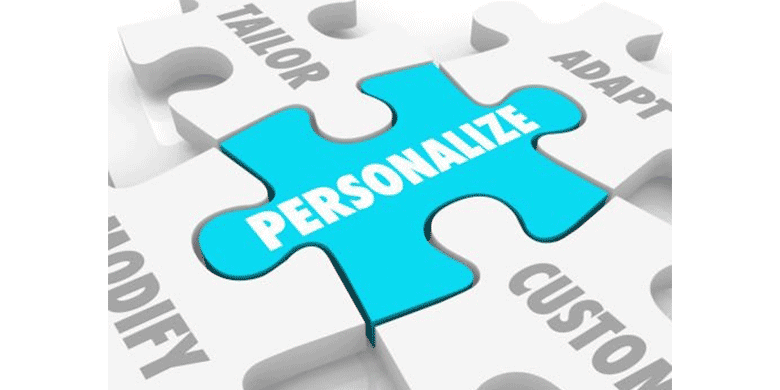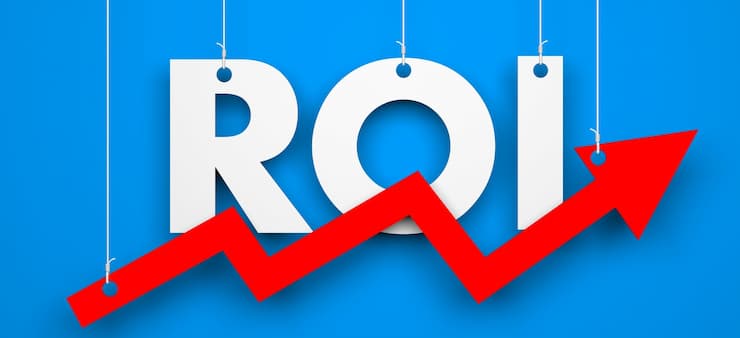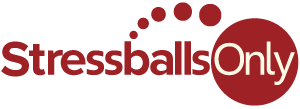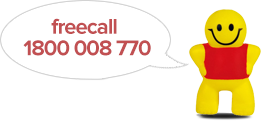
24 January, 2024
Customising Stress Shapes for Your Brand: A Comprehensive Guide
In today's fast-paced world, stress management is more important than ever. Brands are tapping into this by offering promotional stress shapes - small, squeezable objects designed to provide a tactile outlet for stress and tension. But, what makes these simple objects so effective as promotional items? This guide takes you through the essential considerations and options for customising stress shapes to align them with your brand identity.
Why Choose Stress Shapes for Brand Promotion?
The Psychological Power of Stress Relief
Stress shapes go beyond mere novelty items; they have psychological implications that can significantly influence how a person perceives a brand. When someone is faced with a stressful situation—be it at work, in traffic, or while meeting deadlines—having a stress shape within arm's reach can provide instant relief. Squeezing a stress shape helps release endorphins, the body's natural feel-good chemicals, resulting in a sense of calm and well-being.
Furthermore, these brief moments of tranquillity can establish a powerful emotional connection between the individual and your brand. Imagine your logo or company name embossed on it, always in view during these instances of relief. This constant exposure and the positive emotions generated by the stress-relief mechanism act as a psychological anchor. It subtly imbues your brand with a sense of comfort and reliability that can be memorable and long-lasting.
Versatility in Design and Use
They are like chameleons in the world of promotional items; they can adapt and fit into almost any setting, making them a versatile tool for brand promotion across various industries.
- Healthcare: One in the form of a heart or a pill can be an effective way to engage with patients and visitors in hospitals and clinics.
- Tech Industry: Consider using shapes like a cloud, a computer, or even a simple hashtag to resonate with a tech-savvy audience.
- Education: Educational institutions can opt for stress shapes in the form of a book, a pencil, or even a graduation cap to connect with students and faculty.
The scope for creativity is vast, allowing you to mould them to explicitly embody your brand's spirit and values. Even if your industry doesn't immediately suggest an obvious choice of shape, you can always revert to basic geometric forms that can represent stability (squares), innovation (spheres), or dynamism (pyramids). This level of customisation ensures they can be uniquely yours, making them not just promotional items but also extensions of your brand identity.
Customisation: Crafting Your Brand Identity

Material Selection
Selecting the right material is not just a matter of aesthetics or cost; it's a strategic decision that could affect how your brand is perceived.
- Foam-based: Foam-based ones are the most common type you'll find in the market. They're excellent for intricate designs and shapes that require a high level of detail. However, their durability might not be as robust as other materials. If your brand values attention to detail, this could be the material for you.
- Rubber-based: Rubber is an excellent option if durability is a significant concern. These are built to last but can be somewhat limited in the complex shapes they can accurately represent. Durable and long-lasting brands might find these more aligned with their brand image.
- Gel-filled: These provide a unique tactile experience, offering a satisfying squeeze different from foam or rubber. They can also be translucent, which adds another layer of visual appeal. These could be ideal for brands focusing on innovation and offering a distinct sensory experience.
Shape and Size
The shape and size can say a lot about your brand. Choosing a design that aligns closely with your brand's ethos and values is essential.
- Product Representation: For example, a miniature computer or smartphone shape could be apt if you're a tech company. For pet stores, an animal shape would be an obvious choice.
- Symbolic Representation: Not all brands can be easily symbolised by a product. Consider animals, mythical creatures, or even simple shapes like stars or circles that align with your brand's mission or vision.
- Abstract Shapes: For brands that want to evoke a more emotional or conceptual response, abstract shapes can be intriguing and thought-provoking, making your brand memorable differently.
Colour Scheme
The colour or combination of colours you choose can significantly affect your stress shape's appeal. Colour is deeply connected to psychological responses; for instance, blue often evokes feelings of calm, while red can signify passion or urgency.
- Single Colour: If your brand has a primary colour strongly associated with it, sticking to a single colour might be a good idea. This adds to the cohesiveness of your brand identity.
- Multiple Colours: If your brand allows for a more flexible colour palette, you could choose a combination of colours. Ensure these harmoniously align with your brand's guidelines to maintain visual consistency.
By carefully considering each element - material, shape, and colour - you can craft a custom stress shape that does more than relieve tension; it is a tactile extension of your brand's identity.
Enhanced Features for Better Engagement

Adding unique features can take your promotional item from forgettable to memorable, increasing brand engagement and recognition.
Textures and Layers
The tactile experience is a significant part of why stress shapes are effective. By incorporating various textures or layers, you can engage multiple senses, adding an additional level of interaction and making your item more memorable.
- Smooth Texture: This offers a classic feel that's always pleasing. They're suitable for brands that aim for a streamlined, efficient image.
- Ridged or Bumpy Texture: These provide a different sensory experience that some people find even more satisfying than the smooth variants. They could be a good match for brands that want to come across as innovative or offbeat.
- Dual-Layered Design: This involves a softer outer layer and a more rigid inner one, providing two different tactile experiences in one product. A dual-layered design could be an appropriate metaphor if your brand's message revolves around depth or complexity.
Add-On Features
Taking them to the next level involves more than just choosing a shape and material. Special add-ons can significantly improve user experience and, thus, brand impression.
- Scented Materials: Aromatherapy has proven stress-relieving benefits, so why not incorporate this? Infusing your item with a calming scent like lavender or chamomile can make your product doubly effective. This feature could be particularly resonant for healthcare or wellness brands.
- Motion Elements: Ones with moving parts can provide an extra layer of interaction and engagement for those who can't resist fidgeting. Adding motion elements can make your stress shape more intriguing and fun, whether it's a spinning section or small, movable pieces. Brands focusing on creativity or innovation might find this feature especially apt.
Additional features such as textures and add-ons make them more engaging and extend your brand's values and personality. Going the extra mile in customisation demonstrates a commitment to quality and attention to detail, which can only reflect well on your brand.
Practical Considerations
It is not just about design and features; you must also consider the practical aspects affecting your budget and logistics. Here's what to keep in mind:
Cost Factors
While customisation can set your promotional item apart, it comes at a price. Unique shapes, special textures, and additional features like scents or movable elements can all add to the production cost. Here are some considerations:
- Design Complexity: Simple shapes are usually cheaper to produce, while intricate designs can significantly raise costs.
- Material: High-quality or specialised materials may also contribute to a higher unit cost. For example, gel-filled ones tend to be more expensive than foam-based ones.
- Add-On Features: Any extra features like scent infusion or motion elements will also come with an additional price tag.
It's essential to find a balance between uniqueness and budget constraints. Be clear about what aspects of customisation are non-negotiable for your brand and what areas offer room for flexibility.
Minimum Order Quantity (MOQ)
Manufacturers often set a minimum order quantity that you must meet, and this can vary widely between suppliers. When planning your promotion:
- Check the MOQ: Always clarify the minimum order quantity upfront to avoid surprises. This number can impact the overall budget and should be considered when selecting a manufacturer.
- Cost per Unit: Some manufacturers may offer a smaller minimum order at a higher per-unit cost. This can be a viable option for smaller businesses or more targeted promotions.
- Bulk Discounts: On the flip side, ordering in larger quantities often results in lower unit costs. Buying in bulk might be more cost-effective if you foresee ongoing or repeat needs.
Understanding these practical considerations can help you make informed decisions aligning with your promotional objectives and budgetary constraints.
Calculating ROI: Measurable Metrics

The Return on Investment (ROI) is a crucial factor. While the idea of measuring the ROI on something as simple as a stress shape may seem complex, there are ways to track their impact. Here are some metrics to consider:
Engagement Levels at Promotional Events
One of the most immediate ways to measure engagement is during the actual promotional event where you distribute the stress shapes.
- Customer Interaction: Note how attendees react when they receive or interact with them. Are they pleasantly surprised? Do they seem engaged with the item? These immediate reactions can give you a sense of the item's appeal.
- Follow-Up Surveys: If applicable, send out a post-event survey to gauge attendees' thoughts. You can ask questions specifically about the stress shape to get more targeted feedback.
- Sales Leads: Keep track of any sales inquiries or leads generated during the event where they were distributed. An uptick in interest can signify effective engagement.
Social Media Mentions
In the age of social media, the shareability of your promotional items can significantly expand your brand's reach.
- Hashtag Tracking: Recipients will likely share them on social media if they are unique and engaging. Create a specific hashtag for the promotional campaign and monitor its usage to measure reach and engagement.
- User-Generated Content: Keep an eye out for any posts featuring them. User-generated content broadens your exposure and provides you with valuable free marketing content that you can feature in future campaigns.
- Engagement Metrics: Measure likes, shares, and comments on any social media posts. Higher engagement levels usually indicate a more successful campaign.
By paying attention to these measurable metrics, you can calculate a more accurate ROI for your promotional campaign. This will enable you to fine-tune future marketing strategies.
Compliance and Safety
The safety aspect cannot be overstated. As they are often handled extensively and may even come into contact with children, you need to consider if they are compliant and safe.
Non-Toxic Materials
Always opt for ones made from materials that are certified as non-toxic. Whether foam-based, rubber-based, or gel-filled, the materials should meet safety standards and not pose any health risks.
- Certifications: Look for manufacturers that provide certified non-toxic materials. Reputable companies should be able to produce safety certifications upon request.
- Material Data Sheets: These documents can give you detailed information about the materials' properties, including toxicity levels and any other safety concerns.
Regulatory Compliance
In many countries, specific regulations govern consumer product safety, including promotional items like stress shapes.
- Local and International Standards: Make sure they comply with local regulations as well as any international standards if they are to be distributed overseas. Non-compliance can result in legal repercussions and damage your brand's reputation.
- Third-Party Testing: Consider investing in third-party safety testing. This adds an extra layer of assurance and is particularly advisable if the product will be widely distributed or targeted at sensitive groups like children.
Quality Control
Consistency in quality and safety is essential. Ensure that quality checks are part of the manufacturing process.
- Random Sampling: Conduct random sample tests for quality and safety during production.
Batch Numbers: Keep track of batch numbers. This will make it easier to manage recalls if any safety issues arise later.
Brand Reputation
Remember, your promotional items are an extension of your brand. Any safety issues can quickly tarnish your brand's reputation. Therefore, never compromise on the safety and quality, even if it means incurring a slightly higher production cost.
By rigorously addressing compliance and safety, you protect the end-users and your brand's integrity. This proactive approach can save you from potential legal hassles and public relations nightmares down the line.
Conclusion
Customising stress shapes for your brand is a creative and effective way to engage your target audience on both a tactile and psychological level. By understanding your brand, your audience, and the various customisation options available, you can create a promotional item that relieves stress and leaves a lasting impression.
The Stress Balls Only Team




